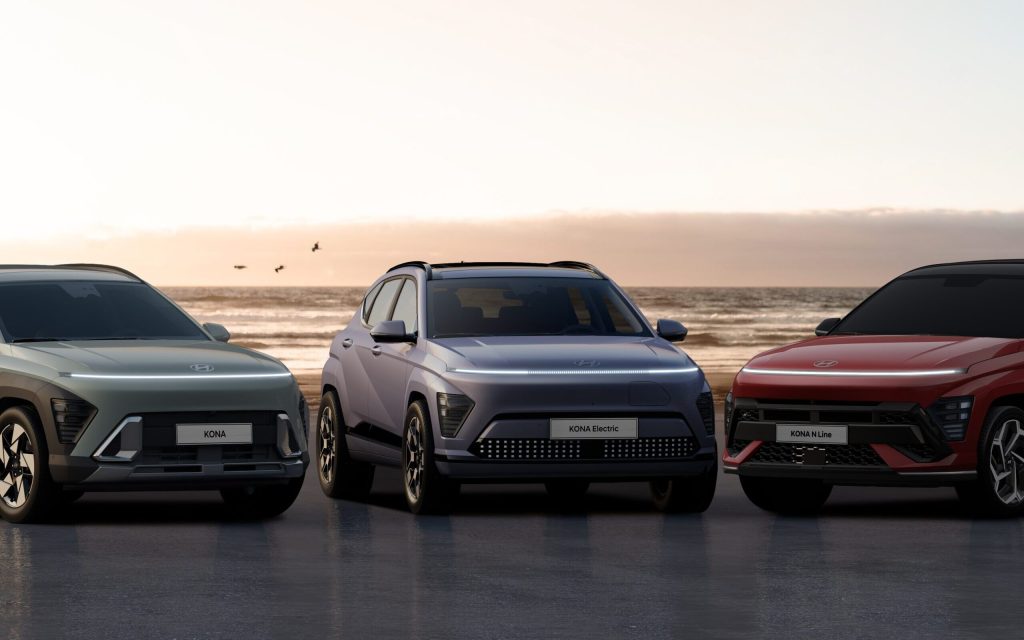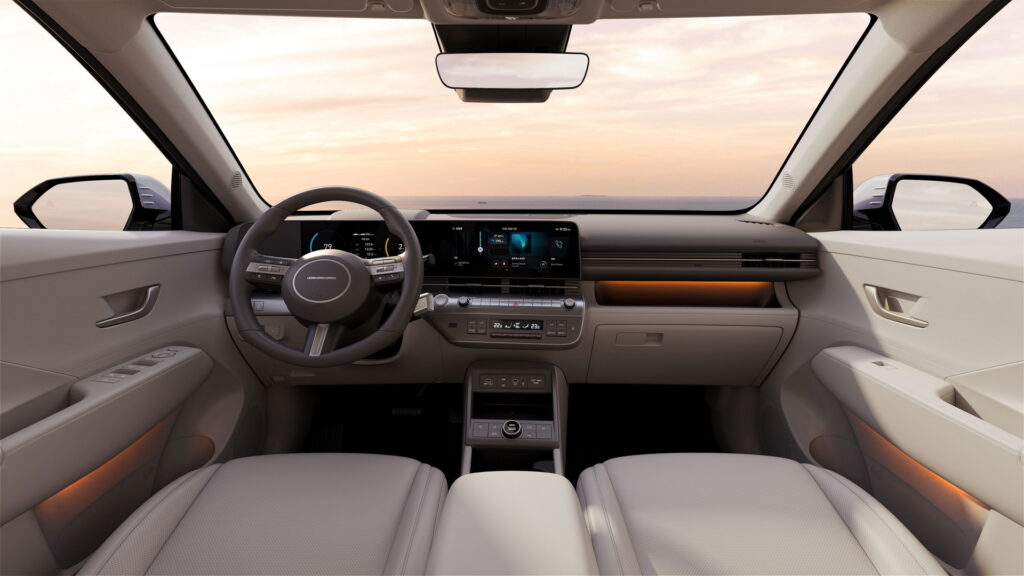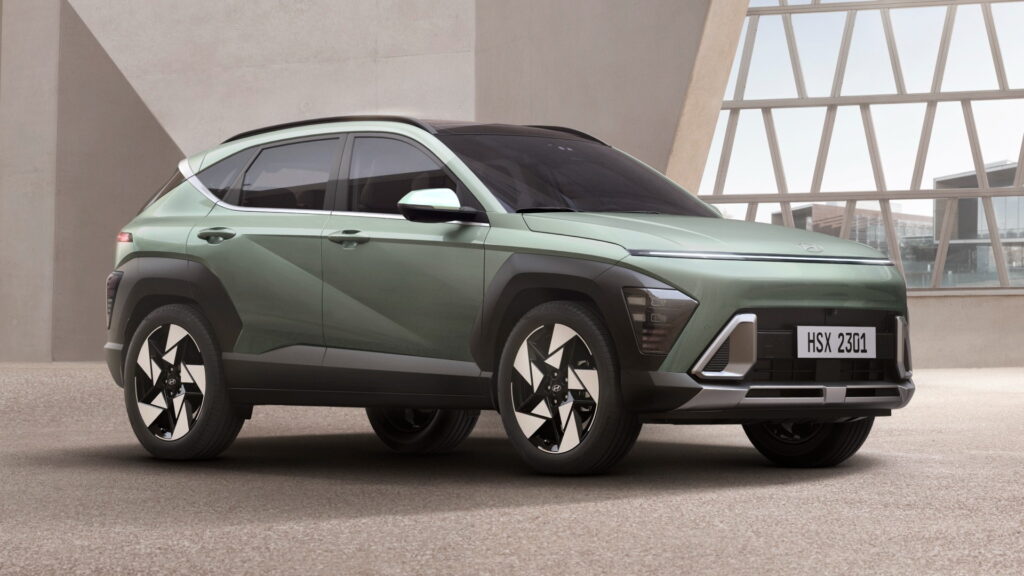Hyundai has revealed more details about its upcoming next-gen Kona subcompact SUV for the Korean market, with global-bound model information expected in March.
We first got a glimpse of the new Kona late last year, sporting its new “EV-led” design, larger dimensions, and electric, hybrid, and internal combustion engine powertrains.
However, we now have more information to share about the model.
Three different looks adjoin the new Kona lineup to complement its three different powertrains.
Each model features horizon head and tail lamps with the EV receiving a pixelated light signature to differentiate itself from the ICE and hybrid variants.

The hybrid also uses upper and lower active air flaps to improve its drag coefficient, while the ICE only comes with an upper flap.
A performance-inspired N Line variant is also said to join the lineup with more aggressive front and rear designs, a twin tipped exhaust, and silver side skirt.
Thanks to its larger dimensions, the interior of the new Kona is said to offer roomier and more versatile space for passenger comfort and cargo storage.
With a 60mm longer wheelbase than the previous generation, leg room has grown by 77mm while headroom is now 11mm higher. Second-row seating shoulder room is now 1402mm which is combined with 85mm thick seats to offer more “living space” for back seat passengers.
When it comes to cargo, the second row can be folded down to create 723 litres of storage space.
On-board technology includes a 12.3-inch dual screen display which can download software updates over-the-air for maintenance and the addition of new features.

The speed at which the tailgate opens and closes can also be changed via the infotainment screen or by simply holding the button for three seconds.
Other features include memory seats, multiple charging ports for devices, and a digital key which can lock, unlock, and start the car via a smartphone or smart watch.
The ICE variant will be available in Korea with a choice of Hyundai’s turbocharged 1.6-litre four-cylinder generating 145kW and 265Nm of torque or the non-turbo 2.0-litre four-cylinder making 110kW and 180Nm.
As for the hybrid, it will get a naturally aspirated 1.6-litre four-cylinder strapped to an electric motor to generate 104kW and 265Nm.

Details on the electric variant will be revealed in March along with which powertrains the New Zealand market will receive.


